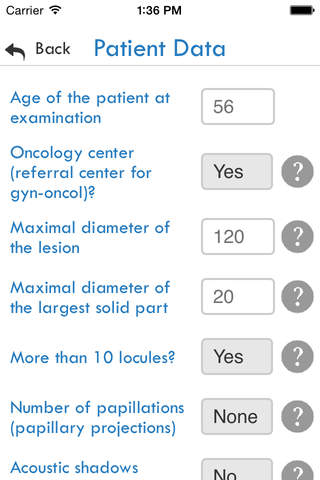
The ADNEX risk model can be used by medical doctors to preoperatively estimate the likelihood that an ovarian (including para-ovarian and tubal) tumor is benign, borderline, a stage I cancer, stage II-IV cancer, or secondary metastatic cancer (i.e. metastasis of non-adnexal cancer to the ovary). The model is based on data derived from women found to have at least one adnexal tumor that was judged not to be physiological, underwent a standardized ultrasound examination, and was later selected for surgery.
The ADNEX model contains nine predictors: age, serum CA-125 (U/ml), type of center (oncology vs other), maximum lesion diameter, proportion of solid tissue, number of papillary projections, the presence of >10 cyst locules, acoustic shadows, and ascites. An oncology center is defined as a tertiary referral center with a specific gynecological oncological unit.
The model was developed by clinicians and statisticians from the International Ovarian Tumour Analysis (IOTA) group, and is based on clinical and ultrasound data from almost 6000 women recruited at 24 centers in 10 countries (Italy, Belgium, Sweden, Czech Republic, Poland, France, UK, China, Spain, and Canada).
A full description of model development and validation is given in Van Calster B, Van Hoorde K, Valentin L, Testa AC, Fischerova D, Van Holsbeke C, Savelli L, Franchi D, Epstein E, Kaijser J, Van Belle V, Czekierdowski A, Guerriero S, Fruscio R, Lanzani C, Scala F, Bourne T, Timmerman D. Evaluating the risk of ovarian cancer before surgery using the ADNEX model to differentiate between benign, borderline, early and advanced stage invasive, and secondary metastatic tumours: prospective multicentre diagnostic study. The BMJ 2014;349:g5920.



